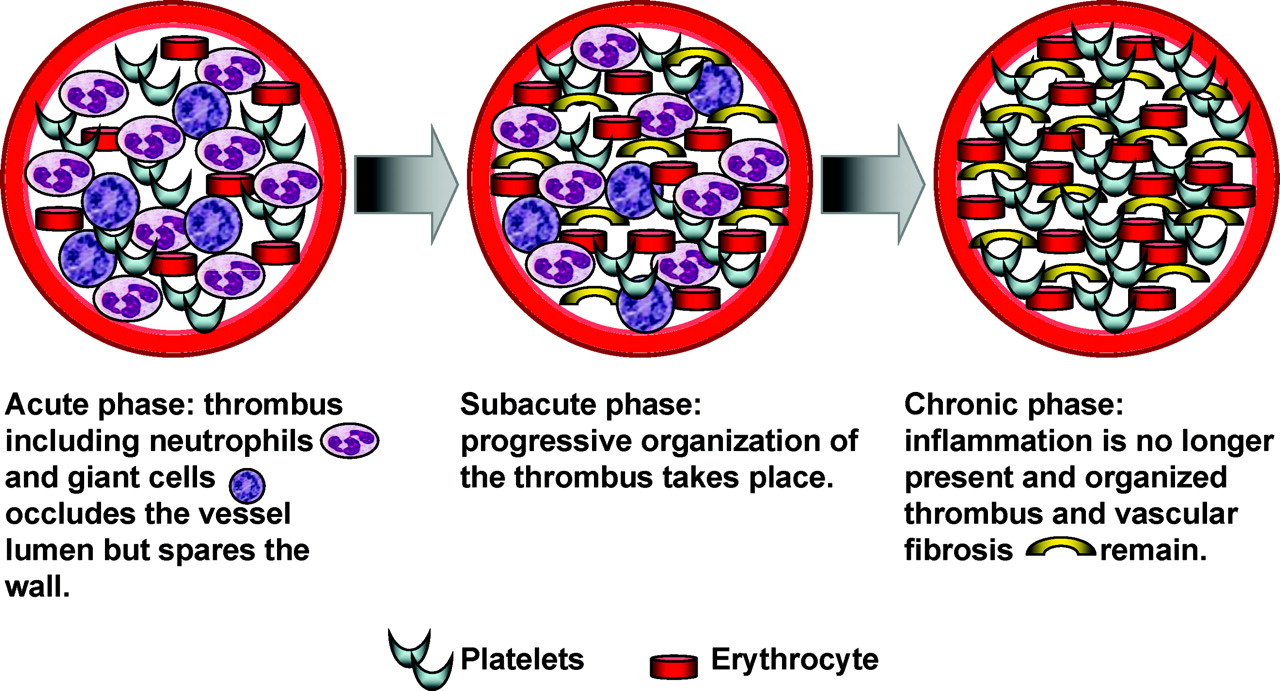Epidemiology
Etiology
Pathophysiology
TAO is an inflammatory, nonatherosclerotic, vasoocclusive disease affecting small and medium-sized vessels of the extremities.
Clinical features
- Migratory superficial thrombophlebitis (recurrent): often seen prior to the onset of limb ischemia
- Tender nodules along the course of the affected vein
- Raynaud phenomenon
- Chronic or acute limb ischemia: may progress from distal to proximal vessels
- Intermittent claudication
- Pain at rest, cool extremities, and/or diminished or absent pulses
- Ulceration and/or gangrene of fingertips and/or toes (digits may autoamputate)
Diagnostics
- Biopsy
- Inflammatory intraluminal thrombi with vessel wall sparing
- Extension into contiguous veins & nerves
Differential diagnostics
Feature Peripheral Artery Disease (PAD) Thromboangiitis Obliterans Etiology Atherosclerosis Inflammatory Vasculitis Patient Profile > 50 yrs with risk factors (HTN, DM, HLD) < 45 yr heavy male smoker Vessels Large proximal arteries Small/Medium distal arteries & veins Key Finding Intermittent claudication Migratory thrombophlebitis, “Corkscrew collaterals” Tx Risk factor management, Revascularization Complete smoking cessation
Link to original